Join 40,000+ sales and marketing pros who receive our weekly newsletter.
Get the most relevant, actionable digital sales and marketing insights you need to make smarter decisions faster... all in under five minutes.
Need More Results from Your Marketing Content? Give It To Your Sales Team

By Zach Basner
Aug 16, 2023

[Listen to this article on our podcast, But We're Different. ]
Most businesses today do some form of content marketing, but I’ve found that only a handful are getting as much out of their efforts as they could.
Most don’t really know what marketing content can actually do for their business, so they play it safe, think small, and are stuck getting minimal results.
They hire a marketing agency to publish a few blog posts every quarter — or they hire a video production company to produce a high-quality “about us” video for their homepage.
And that’s it.
They’ve checked the box and moved on.
This approach misses the true impact great content can have on a business.
Search traffic? Brand recognition? Sure these are fine corollary benefits. But the most impactful application of content is sales enablement.
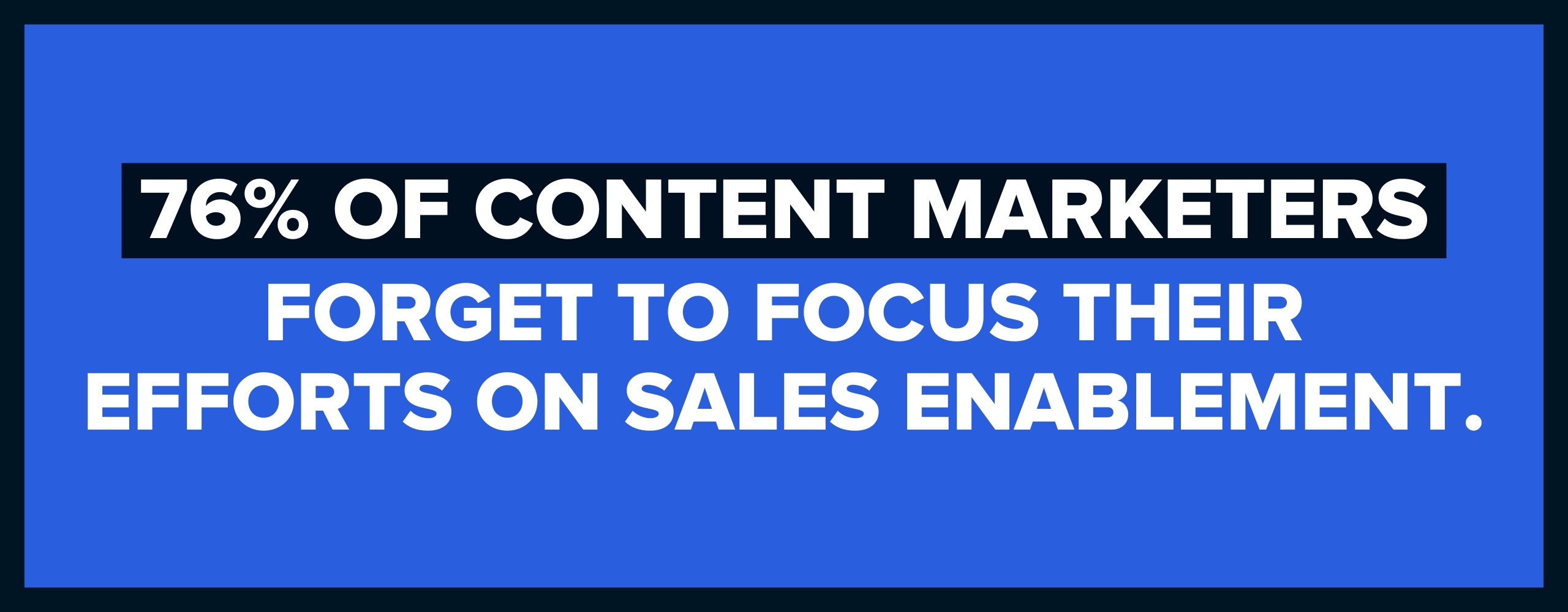
If you’re serious about content marketing — and you want to do it right — you have to realize that the main focus isn't really marketing at all. It should be buyer education during the sales process. Not just education about the company, but education around the buying decision.
But, according to statistics, 76% of content marketers forget to focus their efforts on sales enablement.
This is a big problem — and a huge opportunity.
First off, what do we mean by ‘sales enablement content’?
In modern marketing, “content” is a catch-all term. Over the years, it’s become a bigger and bigger umbrella, with different definitions depending on who’s talking.
Today, “content” can mean blog articles and videos, but also social media posts, website copy, podcasts, emails, guidebooks, research reports, and more.
So before we go further, let’s define our terms.
What I’m talking about today is less about format and more about purpose.
I’m talking about content that enables sales.
Think about it this way: When your sales team is having a meeting with a potential buyer,
- What pieces of content can help that buyer make a better decision more quickly?
- What pieces of content can answer their questions or erase their doubt?
It could be a blog article addressing a common question about price, a video explaining a service, or an in-depth guide comparing several product options.
These would count as sales enablement content, and they should be designed specifically for the sales process — with heavy input from the sales team.
The power of content in the sales process
Every day, your sales team spends hours answering the questions of potential buyers. Some of these prospects are serious and ready to buy, some are just gathering information. But either way, the questions are largely the same.
Whether you sell boat trailers or accounting software, financial services or office furniture, your buyers want to know about price, about features, about timeline, and about logistics. They want to compare options and hedge against buyer’s remorse.
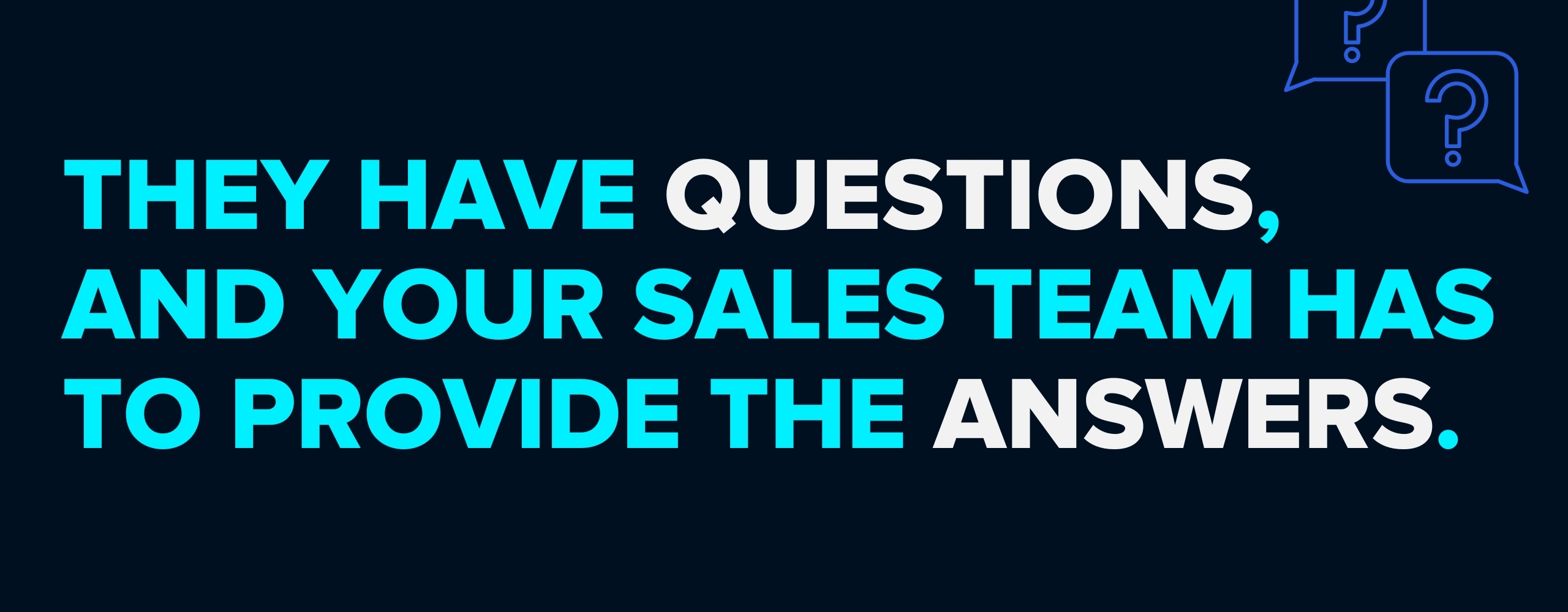
They have questions, and your sales team has to provide the answers. This puts your salespeople in the position of educator, which is exactly the role you want your sales reps to play.
But they need help.
Imagine if you could get those questions out of the way before they even get asked.
Instead of answering the same questions about price in each sales call, your sales reps should send the following email when someone books a call:
Hi there!
I’m looking forward to our meeting on Wednesday. In order to have the most productive call possible, I’m sending you a resource that explains the pricing of all of our models, including the different factors that can make that number go up or down.
Take a look before our meeting so you get a ballpark idea of what to expect. This way, we can get right into talking about your unique project.
See you Wednesday,
Zach
Now, the meeting can be way more productive. Instead of rote answers to the same old questions, sales reps can listen to each prospect’s unique challenges, tailoring their message accordingly.
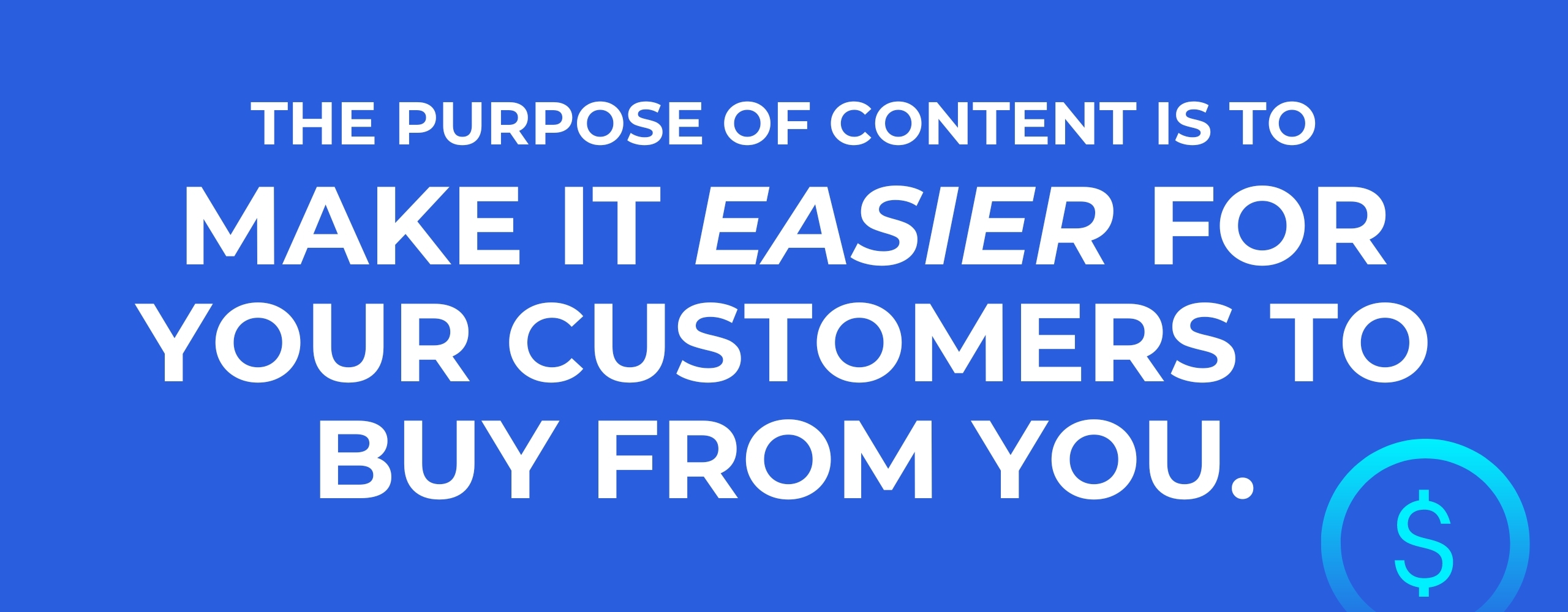
This is the true purpose of content: To make it easier for your customers to buy from you.
This kind of content will shorten your sales cycle and improve your close rates.
So, what does it look like in practice?
Changing the way we think about content
When we work with companies getting started with our They Ask, You Answer framework, we remind them that it is a sales-first initiative.
Early on, we teach them to put almost all of their effort into producing sales enablement content. For every 20 videos and articles they make, as many as 15 might be just for use by the sales team. That means these pieces of content won’t rack up views or clicks or traffic.
And we’re fine with that.
Think about it: Would you rather have 10,000 views that lead to 10 sales or 1,000 views that lead to 100 sales? Most businesses would choose the latter.
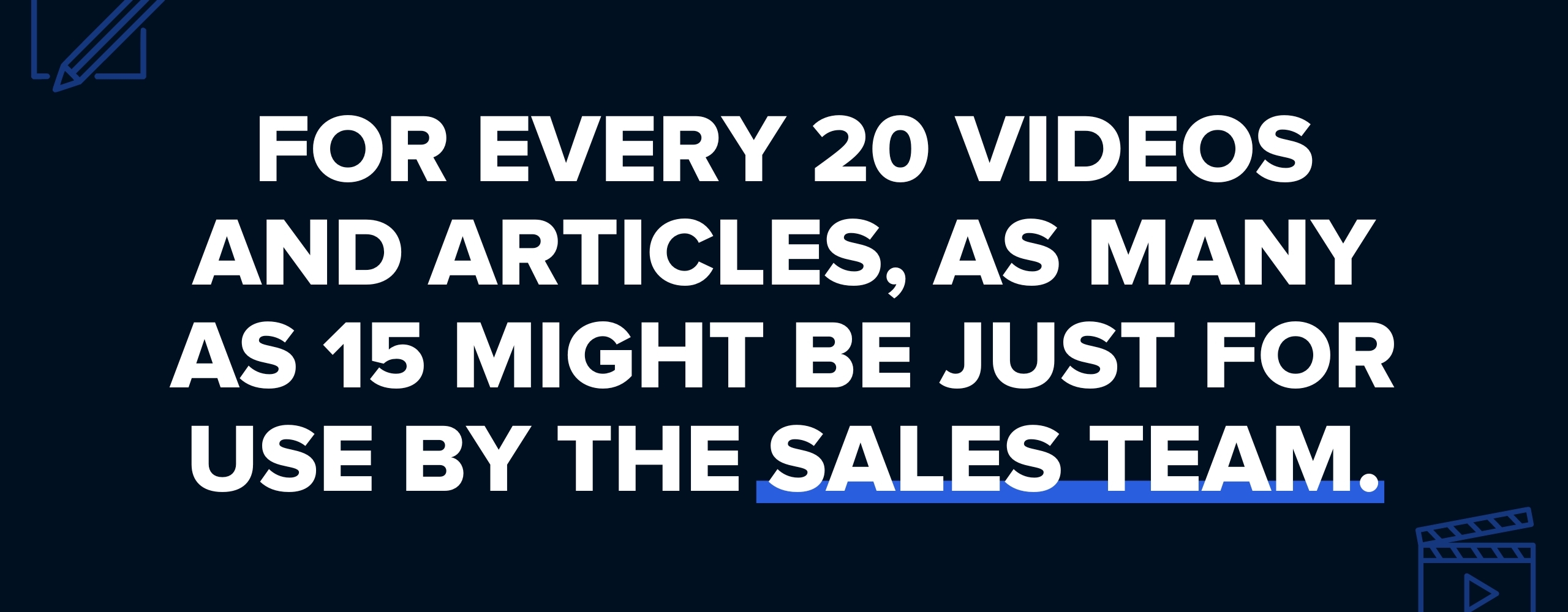
This requires a shift in focus. It means getting your marketing and sales teams together so this content can get produced. For many companies, this is no small task.
Years of entrenched siloing has pulled sales and marketing farther and farther apart, but statistics show that sales teams that work closely with their marketing teams have up to 38% higher win rates.
How to produce sales enablement content (in 6 steps)
To produce the sales enablement content your salespeople need, you and your team should follow these six steps:
- Set up regular meetings between your sales team and marketing team. In these meetings you will brainstorm content ideas and talk about the questions sales reps are hearing from buyers.
- Have marketers watch sales calls and (if possible) interview customers. Your content producers need to hear directly from potential and actual customers. Listen for repeated questions that could be answered with a piece of vetted content.
- Produce and publish content specifically for your prospects. With this input, your team can get to work making, writing, and filming content. As a team, decide whether you want sales enablement content to live on your blog, YouTube channel, website, or be non-indexed or hosted somewhere more private.
- Let your sales team know what content is live — and what’s in the backlog. At each brainstorm meeting, go over what’s been published, explaining particular use cases.
- Utilize a platform like Paperflite or SalesReach to organize and track engagement. Salespeople can use these tools to share content, build personalized landing pages and see how prospects are engaging.
- Iterate and improve the process. You won’t get it perfect at first. But keep at it and work together.
This will take some time — and there will be bumps along the way. Just remember the outcome you’re after: a shorter sales cycle and a higher closing rate.
I promise that all the effort will be worth it.
One piece of content, two purposes
Your focus on sales enablement content doesn’t mean you should abandon organic search. In fact, you can double your impact by repurposing content to serve both ends: sales enablement content to share with buyers and SEO-focused content to drive traffic and build awareness.
With slight modifications, the same piece of content can do both.
Say you’re a financial planning company:
- You produce an article and a video to explain the specifics of what you charge for financial planning. This gets shared with good-fit prospects ahead of their first sales call.
- You repackage the same content to explain the general pricing structure for financial planning. The article gets posted to your blog, the video gets posted to YouTube and chopped up for social platforms.
With a little more effort, you get twice the benefit.
Getting your sales team on board
Resistance to sales enablement often doesn’t come from the marketers making the content but from the salespeople themselves. They’re hesitant to buy in for two big reasons:
- They don’t want to give up their time for new meetings
- They don’t think content will really help them
These are big objections, and to overcome them you’ll need to be smart. Remember, people don’t like to be told what to do, so a top-down approach will yield compliance but not buy-in.
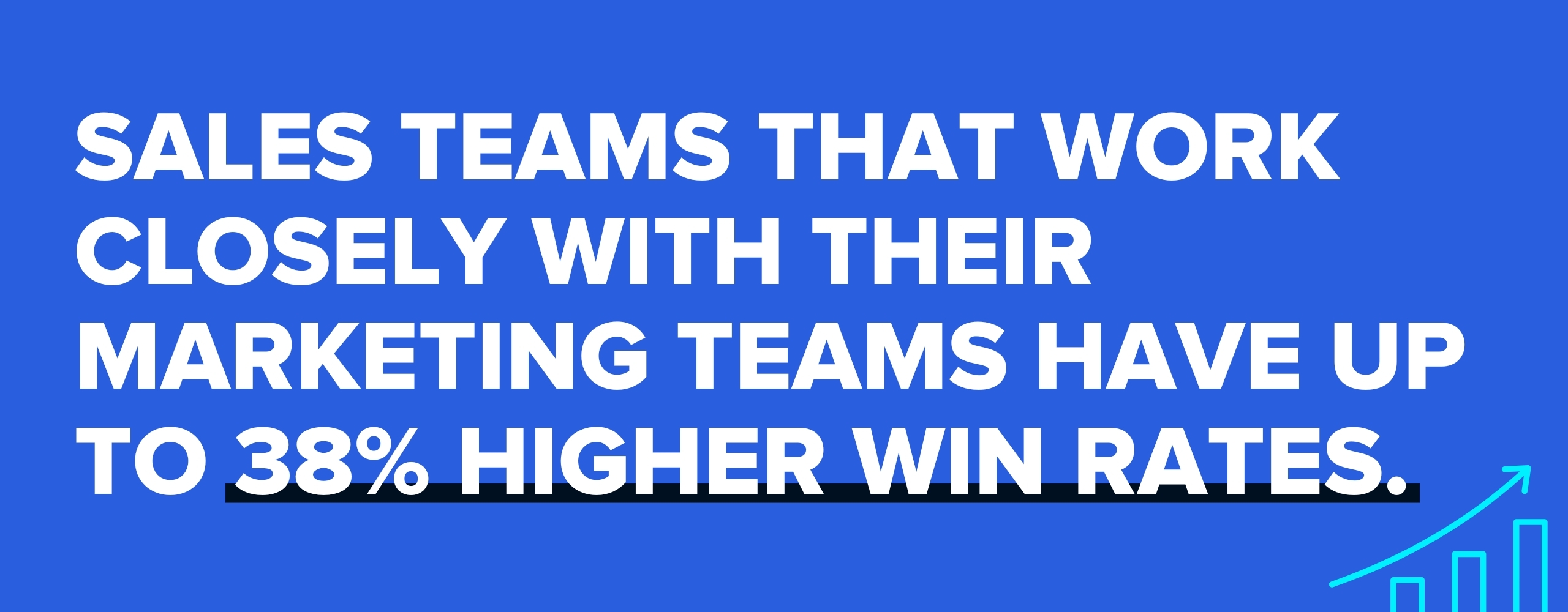
I’ve found that a better approach is to help the salespeople see what’s possible.
Start by asking questions to prompt some self-discovery. Focus on the time that could be saved by not answering the same questions over and over again. Then, select several of the most willing sales reps to pilot the new approach. Salespeople are competitive by nature, and once they see one of their teammates being successful, they’ll get on board too.
Put your content to work
The line between marketing and sales gets more blurry every year. The customer education that used to be the domain of the sales team now happens through content, website tools, and social media at the buyer’s own discretion.
So it doesn’t make sense to draw clear lines in the sand between the two departments.
Instead, put your marketers to work producing content that will directly help the sales team close deals. The results can be transformational for your business.
If you’re looking for more information on exactly how to get started, head over to IMPACT+, where this free course can walk you through important first steps.
Free Assessment: